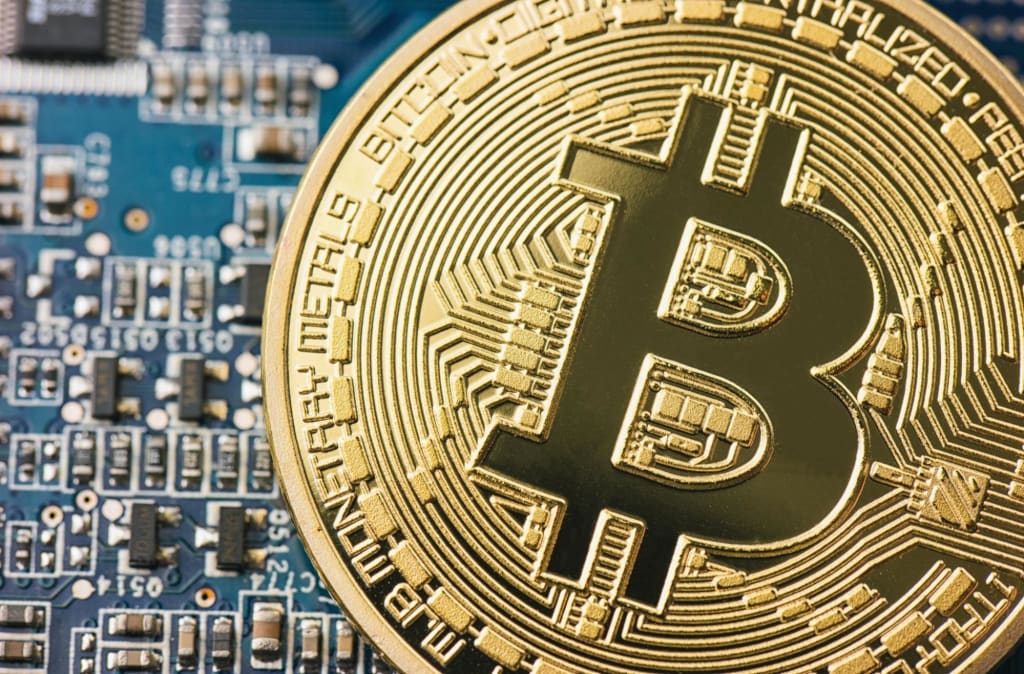
What is the blockchain, how does it work, and why do we need it? These are all valid questions that deserve an answer.
Before you catch up on the latest Blockchain News, this blog post will take a comprehensive look at the blockchain and bitcoin. We'll go in-depth into how they work and what you need to know to use them. So, if you're curious about this exciting technology, read on!
What is the blockchain in cryptocurrency?
Before anything else, it is important to first how cryptocurrency works. Cryptocurrency is a digital or virtual currency that uses cryptography for security. A defining feature of cryptocurrency is that any central authority does not issue it, making it decentralized.
So, how does blockchain fit into all of this? A blockchain is a digital ledger of all cryptocurrency transactions. Think of a blockchain as a checkbook. The transaction data is the equivalent of the check, and the cryptographic hash is like your signature.
Once a block is added to the blockchain, it becomes very difficult to go back and change the transaction data.
Why do we need the blockchain in cryptocurrency?
There are a few key reasons why blockchain is so important in cryptocurrency. First, as we mentioned before, the blockchain provides security.
Cryptocurrency transactions are irreversible, so we must have a secure way to record them.
Second, the blockchain is transparent. All transaction data is stored on the blockchain so that anyone can view it at any time.
This transparency helps ensure that all parties involved in a transaction behave honestly. For example, if someone tries to spend the same bitcoin twice, the blockchain will immediately flag the transaction as fraudulent.
Third, the blockchain is decentralized. There is no central authority that issues or controls cryptocurrency. Instead, it is distributed among all users of the currency.
This decentralization makes cryptocurrency very resistant to government interference or manipulation.
Does all crypto use blockchain?
The short answer is no. Some cryptocurrencies, such as Ripple, do not use blockchain. However, the vast majority of cryptocurrencies do use blockchain technology.
Bitcoin, Litecoin, Ethereum, and most other major coins rely on blockchain. Mainly, this is because blockchain provides a level of security and transparency that other methods do not.
How does the blockchain work?
To make it easier to understand, let's look at a real-life example of how the blockchain works.
Suppose you want to send some bitcoin to your friend. You will first need to create a transaction, which will include your friend's public key (their bitcoin address), the amount of bitcoin you want to send, and your digital signature.
Once you create the transaction, it will be broadcast to the network of bitcoin users (called miners). Miners are responsible for verifying transactions and adding them to the blockchain.
They do this by solving complex mathematical problems. The first miner to solve the problem will add the block of transaction data to the blockchain and receive a reward in bitcoins.
The other miners will then check the work of the first miner to make sure the block is valid. They will add it to their copy of the blockchain if it is.
Once a block is added to the blockchain, it cannot be altered or removed. Each subsequent block contains its hash, which would change if the previous block was changed. So, that's the blockchain in a nutshell!
Where is blockchain stored?
You might be wondering where all this data is stored. The answer is that blockchain is stored on a decentralized network of computers called nodes. These nodes can be scattered all around the world.
Each node has its copy of the blockchain, and they work together to verify and update the blockchain whenever a new transaction is made.
What is a blockchain node?
To give more detail, a blockchain node is a computer that stores a copy of the blockchain and helps to verify and relay transactions.
Nodes can be run by anyone, from individuals with a single computer to large organizations with thousands of computers.
For a transaction to be added to the blockchain, it must be verified by at least 51% of the network's nodes. This ensures that no single entity can manipulate the blockchain.
What's the difference between a database and a blockchain?
To understand the difference between a database and a blockchain, let's go in-depth about how each works.
A database is a centralized system that stores data in a single location. This means that there is one central authority that controls the database.
On the other hand, a blockchain is a decentralized system that stores data across a network of computers. There is no one central authority that controls the blockchain. Unlike a database, a blockchain is distributed among all currency users.
Another key difference between a database and a blockchain is that a blockchain is immutable. Once data is added to the blockchain, it cannot be changed or removed.
Which is better, a database or a blockchain?
There is no right or wrong answer to this question. It depends on your needs. If you need a centralized system that is easy to control, then a database is better.
If you need a decentralized system resistant to government interference, then a blockchain is better. Typically, cryptocurrencies use a blockchain because of the security and transparency you can't get with a database.
How do you create a cryptocurrency blockchain?

Now that you understand the basics of blockchain, you might be wondering how you can create your cryptocurrency blockchain. Not to worry, let's go over the basic steps:
Step 1: Choose a Consensus Mechanism.
The first step is to choose a consensus mechanism. This is the algorithm used to verify and add transactions to the blockchain.
There are many different consensus mechanisms, but Proof of Work (PoW) is the most popular one.
Step two: Set up your Nodes.
The next step is to set up your nodes. These are the computers that will store and verify data on the blockchain. You can either run your node or use a service like Amazon Web Services (AWS).
Step three: Choose a Cryptocurrency Platform.
The third step is to choose a cryptocurrency platform. This is the software that will create and manage your blockchain.
You can choose from various platforms, but some popular ones include Ethereum, Hyperledger Fabric, and Corda.
Step four: Design your Blockchain Application.
The fourth step is to design your blockchain application. This software will run on top of your blockchain and allow users to interact with it. You'll need to decide what features you want to include and how your application will work.
Step five: Test and Deploy your Blockchain Application.
The fifth and final step is to test and deploy your blockchain application. This is where you'll put your blockchain application into production and make it available to users.
You'll need to test your application to ensure it works as expected and then deploys it to a server. And that's it! Those are the basic steps for creating a cryptocurrency blockchain.
In Conclusion
We hope this article helped you understand the basics of blockchain in cryptocurrency. As you can see, it is a crucial element in most digital currencies. Security, transparency, and decentralization are all important aspects of the blockchain, crucial to the success of any cryptocurrency!





Comments
There are no comments for this story
Be the first to respond and start the conversation.